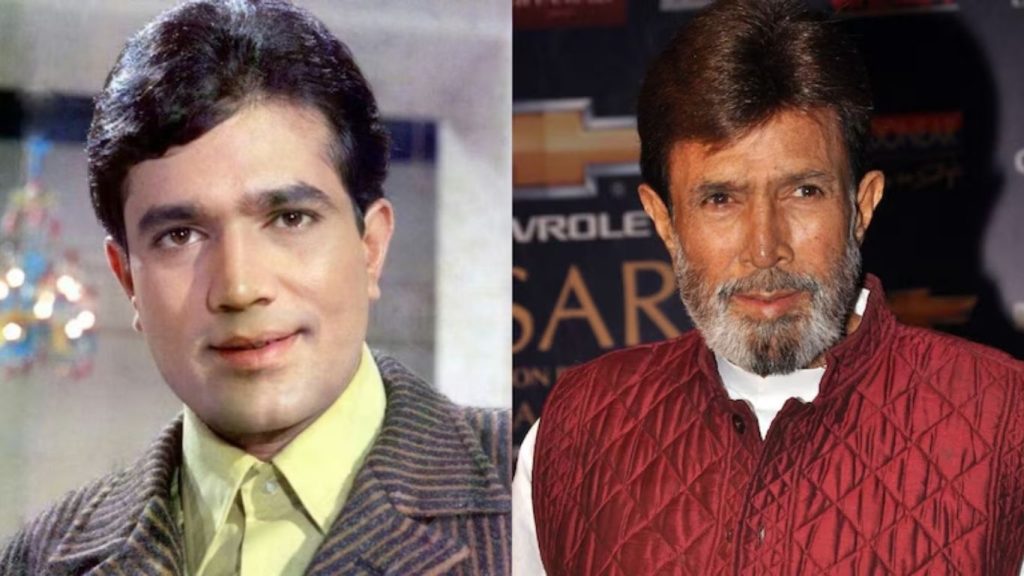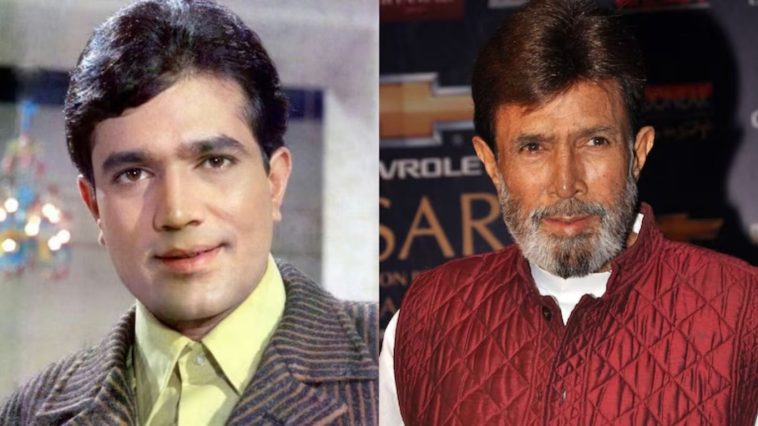When one thinks of Bollywood’s earliest superstar, Rajesh Khanna, the grand bungalow named Aashirwad stands out not just as his home, but as a symbol of an era – of stardom, of glamour, of dreams and also of decline. This article dives deep into the history, architecture, legacy, myth and present state of Aashirwad, exploring how a home becomes legend.
Location and Setting
Situated on Carter Road, overlooking the Arabian Sea in the Bandra neighbourhood of Mumbai, Aashirwad occupied a coveted sea-facing plot. At a time when Bandra was transitioning from a quiet suburb to a glitzy enclave for the film fraternity, the house stood out for its vantage and aura.
Early Ownership: The Haunted Beginnings
Before Rajesh Khanna stepped in, the property had a colourful and rather eerie reputation. Originally belonging to an Anglo-Indian family, the bungalow reportedly lay in a dilapidated state and bore the tag of a “bhoot bangla” (haunted house).
The first significant celebrity-owner was Bharat Bhushan (of “Baiju Bawra” fame). He purchased the house in the 1950s but soon his fortunes declined. The narrative of the house being “cursed” begins here: a successful actor moving into the house, followed by financial and career setbacks.
Next, the bungalow passed to Rajendra Kumar (famously called “Jubilee Kumar” for his string of hits). He purchased it in the 1960s for a modest sum (circa ₹60,000) and named it Dimple after his daughter. But again, after initial success he experienced career and financial troubles, and eventually sold the house. The pattern added to the “cursed bungalow” lore.
Rajesh Khanna’s Acquisition and the Golden Era
In the early 1970s, at the height of his stardom—with 17 solo hits between 1969-71—Rajesh Khanna purchased this very bungalow. He reportedly bought it from Rajendra Kumar for around ₹3.5 lakh. Upon acquiring the property, he renamed it Aashirwad (which literally means “blessing” in Hindi) rather than the earlier name Dimple.

During his occupancy, Aashirwad became symbolic of Khanna’s superstardom. The sea-facing balcony, the fans gathered outside, the glamorous milieu—all contributed to the mythos.
Architectural Features, Interior & Ambience
While the specific architectural drawings are not widely published, some details and features are known:
- The house had a white façade that overlooked the sea, a rare and prized orientation in Bandra.
- Inside, it was a sprawling bungalow by Mumbai standards—at a time when such sea-facing homes were scarce.
- The ambience combined old-world charm with the status of a film star’s home: large windows, balconies, sea-view rooms, green patches and a certain openness uncommon for celebrity homes of that era.
For the fans and public, Aashirwad was not just a home but a spectacle: they would gather outside, hoping for a glimpse of “Kaka” (Khanna’s moniker). The balcony scenes, wave-goodbyes, flashes of film star life—all part of the narrative.
Lives and Moments Inside Aashirwad
A number of poignant personal and professional moments in Rajesh Khanna’s life played out within Aashirwad:
- His marriage to Dimple Kapadia in 1973 occurred during his period of peak fame. The bungalow was part of that glamorous era.
- The birth of his daughters – Twinkle Khanna and Rinke Khanna – took place while he lived in Aashirwad.
- The balcony scenes where Khanna appeared to wave to fans became part of Bandra folklore, images frozen in time.
The Shift: Stardom Lost and the House’s Decline
Though the bungalow had the aura of victory, it also witnessed the fall of his stardom. After the mid-1970s, Khanna’s career started to decline as newer stars emerged, and he spent more time away from his home, at his office on Linking Road.
The house, once a beacon of success, began to symbolise loneliness: the superstar returned to the house to sleep in a small corner room, while much of the rest of the house lay quiet. The myth of the house’s “curse” gained greater strength: earlier occupants saw decline, and now the same narrative extended to Khanna’s story.
The Myth of the Curse: Haunted or Hype?
One of the most intriguing aspects of Aashirwad is the myth that it was “cursed” — the tale being that three major stars who lived there (Bharat Bhushan, Rajendra Kumar, Rajesh Khanna) all faced downturns after occupancy.
Some key elements of the myth:
- The house reportedly lay derelict and unloved before Rajendra Kumar purchased it, which added to its “haunted” aura.
- After Khanna’s decline and eventual passing, the house changed hands, further feeding the narrative of the property being ill-fated.
Of course, from a rational view, the idea of a house “cursing” occupants is a cultural narrative — yet such stories reflect the intersection of superstardom, success, property mythologies and human psychology.
The Sale and Demolition
In 2014, the bungalow was sold to industrialist Shashi Kiran Shetty (of Allcargo Logistics) for approximately ₹90 crore. Shortly thereafter, the bungalow was demolished and replaced by a high-rise or redevelopment project.
The demolition marked the end of a physical landmark—but not of the legend. Fans and film historians still refer to Aashirwad as a landmark of Bollywood’s golden era.
Why Aashirwad Matters: Cultural Significance
Beyond being a home, Aashirwad matters for several reasons:
- It symbolises the rise of the film superstar era in Hindi cinema and the way stars and their personal homes became part of public imagination.
- It illustrates the interplay between real estate, wealth, celebrity, and urban changes in Mumbai—particularly in the Bandra area.
- It shows how places transform—from detached bungalow, to celebrity home, to redevelopment site—and how memory, nostalgia and myth linger even after the building is gone.
- It is a case study of how celebrity homes become pilgrimage sites: fans gathering outside, stories of the star waving from balcony, photos circulating in magazines and social media.
Architectural & Real Estate Insights
From available commentary:
- The original price at Rajendra Kumar’s purchase was around ₹60,000 in the 1960s—astounding when contrasted with the ₹90 crore sale decades later.
- The property’s sea-facing orientation made it especially valuable in Bandra, a neighborhood which transformed significantly over the decades from a quiet suburb to a high-end enclave.
- The bungalow’s demolition underscores the shift from individual large homes to multi-storey redevelopment in Mumbai—reflecting broader urban pressures and land economics.
- There is also a heritage/conservation debate: was the bungalow historic enough to be preserved? Some commentary laments the loss of such landmark homes.
Stories, Anecdotes & Fan Culture
Here are several stories associated with Aashirwad:
- Fans of Rajesh Khanna used to gather outside the balcony, hoping just for a wave. The house became part of the fan-idol dynamics.
- It is said that after Khanna’s demise, many fans visited the house, laid garlands outside, and treated the building almost like a shrine.
- The myth of the “curse” amplified its fascination: tabloid-style stories about a haunted bungalow, about stars living there and then hitting rough patches. These stories, while speculative, added to its mystique.
- One anecdote claims that when the house was sold, there were conditions about turning it into a museum for Khanna’s memorabilia—but that plan reportedly did not materialise.
The Legacy Today
Though the physical bungalow no longer exists in its original form, its legacy lives on in multiple ways:
- Film-history tours of Mumbai reference Aashirwad and Carter Road as part of the celebrity-homes trail.
- For fans of Rajesh Khanna, the house remains part of his life-story: the home where he lived his peak and his later years.
- In real-estate lore, the story of a property bought for a few lakhs and later sold for tens of crores in the same location is illustrative of Mumbai’s property value escalation.
- The myth of the house being “cursed” continues to be referenced in entertainment articles and social media—sometimes as curious trivia, sometimes as commentary on superstardom’s volatility.
Lessons and Takeaways
From the story of Aashirwad, several broader lessons emerge:
- Celebrity does not automatically guarantee permanence: even the biggest star can face decline, and their homes become part of that narrative.
- Location and timing matter enormously: a sea-facing bungalow in Bandra in the 1970s was rare; today, land value has shifted dramatically.
- The stories we tell about places—haunted, cursed, blessed—are as much about culture as they are about history. These narratives shape how we remember places.
- Even when buildings disappear, what matters often is the memory attached to them: the stars who lived there, the moments they hosted, the fans who watched.
FAQs: What You Might Wonder
What happened to the bungalow?
The bungalow was sold in 2014 to Shashi Kiran Shetty and subsequently demolished, with redevelopment underway.
Why was it called “haunted” or “cursed”?
Because successive owners—three major stars—experienced downturns after acquiring the house, the public and press wove a narrative of misfortune linked to the property.
Does anything remain of Aashirwad today?
While the original bungalow has been demolished, the site and its memories remain part of Mumbai’s film-heritage map; references to the house continue in print and digital media.
Could the house have been preserved as heritage?
There was commentary that the bungalow represented a bygone era of Bollywood and Mumbai architecture, and that its demolition marks a loss. However, no formal heritage protection was apparently in place.
Final Thoughts
Aashirwad, once the home of Rajesh Khanna, is more than bricks and mortar. It is a symbol: of stardom, of Mumbai’s real-estate transformation, of celebrity folklore, of myth and memory. The bungalow witnessed the high of a superstar in his prime, the personal joys of family life, and the eventual decline of time and fame. It then became a subject for legend—haunted, cursed, iconic.
When we talk about it today, we’re not just thinking of a house but of the era it represented. The sea-facing balcony, the fans waiting outside, the name “Aashirwad” emblazoned on the façade—all of that lives in the imagination. And even though the physical house may be gone, the story endures.
In the end, Aashirwad stands as a reminder: that stars shine, fortunes turn, homes become legends—and that memory is as enduring as marble, perhaps even more so.


